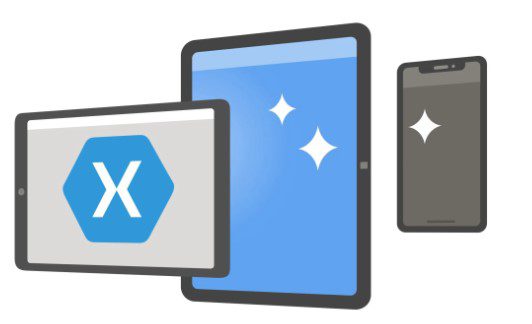- Home
- App Development Services
- Is Xamarin Still Used?

In the dynamic realm of mobile app development, Xamarin carved a niche for itself as a cross-platform framework utilizing C#. Microsoft’s acquisition and subsequent transformation into an open-source product propelled its popularity, allowing developers to create applications for Android, iOS, and Windows while sharing code across platforms.

Xamarin Evolution and Transformation
Xamarin’s journey is marked by evolution and transformation. Initially perceived as a promising but flawed framework, it faced implementation issues, bugs, and bloat. Microsoft, acknowledging these challenges, replaced Xamarin.Forms with .NET MAUI in November 2021, signaling a shift toward a more modern and user-friendly development framework.
Delving into the roots, Xamarin’s troubled development history posed hurdles for developers. Despite being a sound theoretical framework, practical implementation proved challenging. The major drawbacks include:
Utilizing Xamarin means navigating through limited platform elements and .NET open-source libraries. The constrained options often require extensive native coding, with a lack of diversity compared to iOS and Android native development.
Xamarin faces compatibility issues with third-party libraries and tools. Developers must resort to specific plugins or integrations outside the platform, adding complexity to the development process.
Complex apps demanding a rich user interface or extensive user interactions may find Xamarin unsuitable. Developers require in-depth knowledge of iOS and Android native technologies, making it more suitable for smaller, less complex applications.
Xamarin apps tend to be larger compared to natively built ones. The size is determined by base class libraries, the Mono runtime, and data libraries. However, developers can employ strategies like code linking and removal to optimize file sizes.
The framework’s reliance on third-party tools results in delayed support for the latest iOS and Android releases. Developers may face challenges keeping up with the evolving platforms.
While Xamarin is free for individual developers, it poses a financial challenge for businesses. Advanced tools for enterprises come at a cost, with the initial year being more expensive due to discounts in subsequent years.
Finding Xamarin developers is a challenge due to a relatively small community. Microsoft has responded with free courses to foster developer engagement and support.
Xamarin, a cross-platform app development framework, was being actively used by developers to create mobile applications for iOS and Android using a single codebase. Microsoft had acquired Xamarin in 2016 and integrated it into their suite of development tools.
The future of Xamarin could involve continued enhancements and updates to keep up with evolving mobile technologies. Xamarin.Forms, which allows developers to build user interfaces that can be shared across different platforms, may see improvements for a more seamless development experience. Integration with emerging technologies such as augmented reality (AR) or virtual reality (VR) could also be explored.
Additionally, Xamarin’s alignment with Microsoft’s broader initiatives, such as .NET and Azure, might bring about tighter integration and more synergies with other Microsoft tools and services. This could further streamline the development process and provide additional capabilities for Xamarin developers.
However, the landscape of technology evolves rapidly, and new frameworks and tools may emerge.
In answering the question “Is Xamarin still used?” the verdict is affirmative, but with an impending shift. Microsoft’s strategic move ensures a smooth transition to .NET MAUI, aligning with the evolving landscape of mobile app development. The legacy of Xamarin persists through existing apps, but the future holds newer, more efficient solutions as technology advances.
© 2013 - 2025 Foreignerds. All Rights Reserved